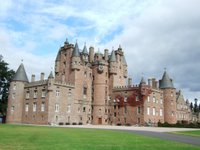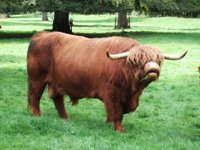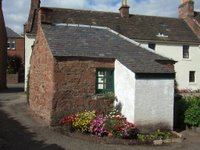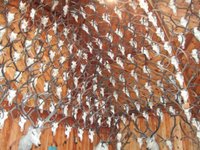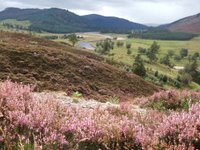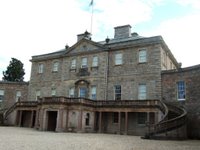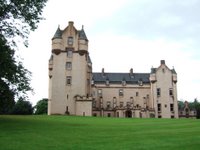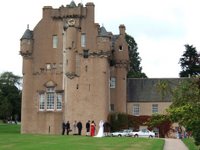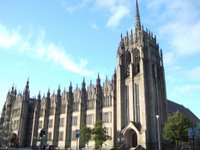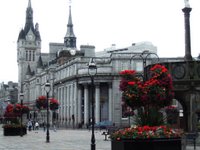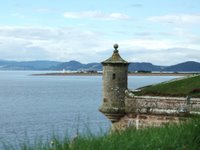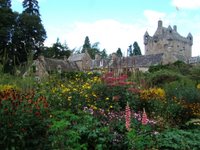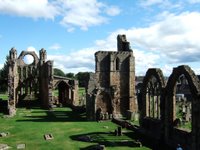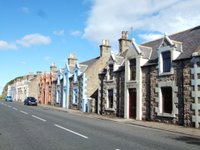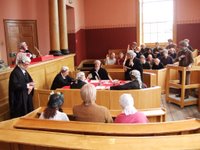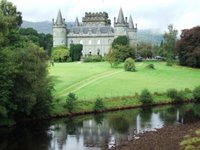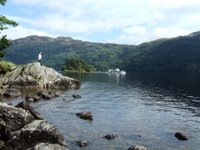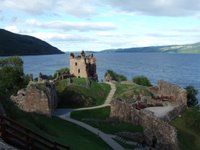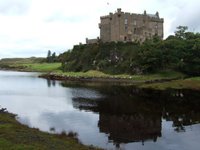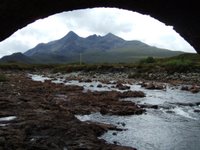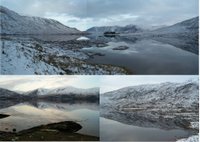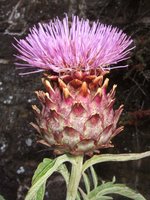 Unlike yesterday, the weather forecasters had warned us that today would be wet: time for some indoor touring. Fortunately we were near two of Scotland’s best-known castles.
Unlike yesterday, the weather forecasters had warned us that today would be wet: time for some indoor touring. Fortunately we were near two of Scotland’s best-known castles.
First was Scone Palace, which has been associated with the coronation of the Kings of Scotland ever since McAlpin came over from Ireland and became the first King. He brought the Scone Stone with him and subsequent kings were crowned on it at Scone on Moot Hill: an artificial mound supposedly brought there in the boots of his Lords so that they could swear allegiance standing on their own soil.
The Palace is amazing: the interiors are very impressive and well worth visiting.
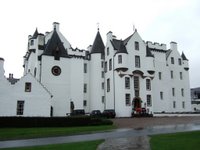 Alter a substantial lunch of very thick Scotch broth (perfect for such a miserable day) we set out in the heavy rain for Blair Castle.
Alter a substantial lunch of very thick Scotch broth (perfect for such a miserable day) we set out in the heavy rain for Blair Castle.This is a very stunning looking castle, painted white. Even on a grey day, it looked very striking. They advertise that you get to see 30 rooms in the castle, which was an excellent way to while away a miserable day.
 They weren't exaggerating, then were actually 31, plus many small connecting rooms. This castle was not as sumptuous as the previous one, but still very interesting, with many fine rooms and furniture. One very useful feature was that they numbered the many family portraits, and then identified the person by their number on a relatives family tree in every room.
They weren't exaggerating, then were actually 31, plus many small connecting rooms. This castle was not as sumptuous as the previous one, but still very interesting, with many fine rooms and furniture. One very useful feature was that they numbered the many family portraits, and then identified the person by their number on a relatives family tree in every room.


